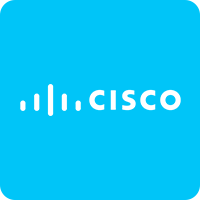Hybrid Agent Model
The customer service industry stands at a crossroads, with companies seeking solutions that combine the best elements of different operational approaches. Hybrid delivery has emerged as the answer for organizations unwilling to commit exclusively to either traditional offices or fully remote setups. This blended strategy creates a flexible framework where agents split their time between corporate facilities and home offices according to thoughtfully designed schedules that optimize for business needs, team dynamics, and individual preferences. For enterprises navigating fluctuating service demands, diverse workforce expectations, and complex quality requirements, hybrid operations offer a versatile solution that refuses to sacrifice performance for flexibility.

T-Mobile adopted a hybrid call center model to improve customer service and agent flexibility. Allowing some agents to work from home while others continued working in the office resulted in improved customer service levels and reduced agent turnover.

Cisco introduced flexible work arrangements for its call center agents, including the option to work from home or in the office. The company reported increased employee satisfaction, retention, and a decrease in absenteeism. The hybrid model helped Cisco improve customer service levels and reduce agent turnover.

The Blended Approach Unpacked
Hybrid customer service integrates both facility-based and remote work within a single operational framework, allowing representatives to function effectively across multiple environments. This model creates a deliberate rhythm of in-office and at-home workdays, capitalizing on the unique strengths of each setting while minimizing their respective limitations.
The sophisticated hybrid systems of today bear little resemblance to the makeshift arrangements hastily implemented during pandemic disruptions. Contemporary blended operations feature intelligent scheduling algorithms that determine optimal work locations for specific activities, specialized management techniques that maintain consistency across different environments, and technological ecosystems that create seamless experiences regardless of where agents are physically located. These operations have transformed customer service from rigid location-dependent functions into adaptive ecosystems that respond dynamically to changing requirements.
Unlike earlier compromises that simply divided time between locations without strategic intent, modern hybrid models represent carefully orchestrated systems where every aspect—from which activities happen where to how teams maintain cohesion despite variable physical presence—is deliberately designed to maximize performance. Companies now choose hybrid delivery not as a halfway measure but as a strategic decision that creates specific advantages impossible to achieve through either pure office-based or fully remote approaches.
The Hybrid Landscape in 2025
Blended service delivery has seen remarkable adoption growth, with Forrester Research indicating that hybrid models now account for approximately 20% of global customer service operations—quadrupling from just 5% in 2019. This substantial expansion reflects both practical experience with different delivery approaches and deeper understanding of the unique benefits that flexible operations provide.
Several distinctive trends characterize today’s hybrid service environment:
Strategic Design: Blended operations have evolved from compromise arrangements into purposefully crafted systems where specific activities are assigned to the most appropriate environment.
Intelligent Scheduling: Sophisticated algorithms now determine optimal work locations based on activity requirements, team coordination needs, and individual performance patterns.
Leadership Innovation: Specialized management techniques have developed specifically for maintaining consistent performance and team cohesion despite variable physical presence.
Seamless Technology: Integrated platforms now create consistent experiences across different work environments, eliminating friction when transitioning between locations.
Unified Culture: Deliberate approaches to maintaining organizational identity and belonging despite variable physical presence have become essential competencies for successful hybrid operations.
These innovations have transformed hybrid delivery from a temporary compromise into a sophisticated strategic choice that offers unique advantages for organizations with specific service requirements and business objectives.
Key Advantages of the Hybrid Approach
Operational Adaptability and Environmental Optimization
Blended model enables situational excellence:
• Activity Matching: Ability to assign tasks to the most appropriate environment
• Volume Flexibility: Adaptable capacity management through variable staffing approaches
• Disruption Resilience: Maintained operations during events affecting either work setting
• Seasonal Adjustment: Modified work distribution during different business cycles
• Gradual Evolution: Ability to test and refine service approaches without wholesale changes
Organizations implementing well-designed hybrid models typically achieve 30-40% greater operational adaptability compared to single-environment alternatives, particularly during unexpected disruptions or demand fluctuations.
Financial Efficiency Without Quality Compromise
Balanced approach optimizes economics:
• Space Optimization: Reduced facility footprint while maintaining physical presence benefits
• Infrastructure Rationalization: Selective investment in enterprise-grade resources where most impactful
• Talent Retention: Decreased recruitment and training costs through improved employee satisfaction
• Geographic Flexibility: Partial ability to recruit beyond commuting distance of physical facilities
• Scaling Efficiency: More gradual facility expansion requirements during growth periods
Companies with sophisticated hybrid models typically achieve 15-25% cost savings compared to fully office-based operations while maintaining quality advantages that fully remote approaches cannot match.
Talent Attraction and Workforce Optimization
Flexible approach enhances recruitment:
• Preference Accommodation: Ability to attract candidates with different work style preferences
• Commute Reduction: Decreased transportation burden while maintaining team connection
• Work-Life Enhancement: Improved balance through partial schedule flexibility
• Accessibility Expansion: Opportunities for candidates with partial mobility or transportation limitations
• Competitive Differentiation: Attractive middle-ground offering compared to all-or-nothing alternatives
Organizations leveraging hybrid recruitment advantages typically fill positions 20-30% faster and access significantly more diverse candidate pools compared to single-model operations.
Balanced Team Dynamics and Collaborative Synergy
Rhythmic approach enhances connection:
• Relationship Foundation: Regular in-person interaction building trust and understanding
• Focused Collaboration: Scheduled office days optimized for team activities and innovation
• Concentration Balance: Remote days for focused work requiring minimal interruption
• Community Maintenance: Sufficient physical presence to maintain culture and belonging
• Mentorship Effectiveness: In-person guidance complemented by virtual follow-up
Companies with well-designed hybrid team structures typically achieve 15-20% higher collaboration effectiveness and significantly stronger team cohesion compared to fully remote alternatives.
Business Continuity and Operational Resilience
Diversified approach enhances stability:
• Location Redundancy: Operations distributed across multiple environments reducing single-point failures
• Transition Experience: Teams practiced in switching between work settings when necessary
• Technology Readiness: Systems designed for seamless operation regardless of agent location
• Disruption Familiarity: Regular environment changes creating adaptability during unexpected events
• Capacity Flexibility: Ability to temporarily shift balance between locations during specific challenges
Organizations with mature hybrid operations typically maintain 40-50% better service continuity during facility disruptions compared to office-dependent alternatives, while avoiding the technology vulnerabilities of fully remote models.
Addressing Business Challenges Through Hybrid Delivery
Balancing Quality Requirements with Cost Pressures
Competing priorities create operational tension:
• Selective Presence: In-person supervision for quality-critical functions while reducing overall facility costs
• Targeted Investment: Enterprise-grade resources for specific activities while leveraging home equipment for others
• Performance-Based Scheduling: Office assignment based on quality requirements and individual capabilities
• Supervision Optimization: Direct oversight where most impactful while using technology-enabled monitoring elsewhere
• Training Effectiveness: In-person development for critical skills while using virtual approaches for knowledge transfer
Organizations with strategically designed hybrid models typically achieve 15-20% cost savings while maintaining quality metrics within 5% of fully office-based operations—a compelling balance impossible with single-environment approaches.
Meeting Diverse Employee Expectations and Preferences
Workforce demands create recruitment challenges:
• Flexibility Options: Partial accommodation of different work style preferences
• Commute Reduction: Decreased transportation burden while maintaining team connection
• Balance Improvement: Structured flexibility enhancing work-life integration
• Personalization Potential: Individualized arrangements based on role requirements and performance
• Adaptation Capability: Evolving policies responding to changing workforce expectations
Companies with flexible hybrid approaches typically achieve 20-30% higher employee satisfaction and significantly better retention compared to rigid single-model operations, particularly for high-demand talent categories.
Maintaining Team Cohesion and Organizational Culture
Connection challenges threaten performance:
• Rhythmic Togetherness: Regular in-person interaction maintaining relationships and belonging
• Purposeful Presence: Office time specifically designed for connection and collaboration
• Virtual Continuity: Digital engagement maintaining momentum between physical interactions
• Cultural Rituals: In-person events reinforcing shared identity and values
• Leadership Visibility: Direct interaction with management maintaining mission alignment
Organizations with well-designed hybrid community strategies typically achieve 15-20% higher engagement scores and significantly stronger cultural alignment compared to fully remote alternatives.
Adapting to Changing Business Requirements and Conditions
Static approaches limit responsiveness:
• Volume Flexibility: Adaptable staffing approaches accommodating demand fluctuations
• Crisis Resilience: Maintained operations during events affecting either work environment
• Seasonal Adjustment: Modified work distribution during different business cycles
• Gradual Transformation: Ability to test and refine service approaches without wholesale changes
• Market Responsiveness: Capacity to quickly adjust operations to changing customer expectations
Companies with mature hybrid operations typically respond 30-40% faster to changing business conditions compared to single-model alternatives, particularly during unexpected disruptions or rapid growth periods.
Optimizing Performance Across Different Activities and Functions
Varied tasks require different environments:
• Activity Matching: Assignment of work to most appropriate setting based on requirements
• Collaboration Scheduling: Coordination of team presence for innovation and problem-solving
• Focus Facilitation: Remote days for concentration-intensive tasks requiring minimal interruption
• Training Optimization: In-person development for interactive skills, virtual for knowledge acquisition
• Specialization Support: Environment selection based on specific role requirements and functions
Organizations with activity-optimized hybrid models typically achieve 10-15% higher overall productivity compared to one-size-fits-all approaches, particularly for complex service operations with diverse task requirements.
Implementation Best Practices
Strategic Schedule Design and Work Assignment
Thoughtful scheduling determines hybrid success:
• Activity Analysis: Determination of which functions benefit most from which environment
• Team Coordination: Synchronization of office days for collaborative functions and relationships
• Rhythm Creation: Consistent patterns creating predictability and routine
• Flexibility Balance: Appropriate combination of structure and individual accommodation
• Performance Alignment: Schedule adjustments based on quality and productivity patterns
Companies with sophisticated scheduling approaches typically achieve 20-25% better operational coordination and significantly higher employee satisfaction compared to those with basic rotation systems.
Technology Integration and Experience Consistency
Technical foundation enables seamless operation:
• Environment Parity: Consistent systems and capabilities regardless of work location
• Transition Simplicity: Effortless movement between different work settings
• Collaboration Tools: Technologies facilitating teamwork despite variable physical presence
• Unified Communications: Integrated platforms connecting all team members regardless of location
• Security Consistency: Equivalent protections across all work environments
Organizations with seamless technology integration typically experience 30-40% fewer operational disruptions and significantly higher productivity compared to those with environment-dependent systems.
Leadership Development and Management Adaptation
Supervision approach significantly impacts hybrid success:
• Outcome Focus: Emphasis on results rather than physical presence or activity
• Consistency Maintenance: Equivalent expectations and experiences across different environments
• Connection Prioritization: Deliberate relationship building despite variable physical interaction
• Visibility Creation: Systems ensuring performance recognition regardless of location
• Trust Cultivation: Management approaches emphasizing autonomy and accountability
Companies with hybrid-optimized leadership typically achieve 15-20% higher team performance and significantly better employee satisfaction compared to those applying traditional management to flexible environments.
Physical Space Optimization and Office Reimagination
Facility approach determines in-person value:
• Collaboration Emphasis: Space design prioritizing interaction and teamwork
• Resource Concentration: Focused investment in capabilities unavailable in home environments
• Community Facilitation: Environments specifically engineered for relationship building
• Flexibility Integration: Adaptable spaces accommodating varying team sizes and activities
• Experience Enhancement: Compelling environments making office time valuable and attractive
Organizations with purpose-designed hybrid facilities typically achieve 25-30% higher in-office productivity and significantly stronger team engagement compared to those maintaining traditional workspace configurations.
Culture Engineering and Community Development
Connection approach determines team cohesion:
• Presence Purposing: Clear value creation during in-person time
• Virtual Continuation: Meaningful engagement between office interactions
• Ritual Creation: Consistent practices building shared identity and belonging
• Relationship Facilitation: Structured opportunities for connection development
• Inclusive Design: Approaches preventing disadvantages based on work location
Companies with sophisticated hybrid community strategies typically achieve 20-25% higher engagement scores and significantly stronger team performance compared to those with location-dependent culture approaches.
The Balanced Advantage: Harmony in Service Delivery
The hybrid model continues to evolve, with several key trends shaping its future development:
Intelligent Work Distribution and Optimization
Allocation approaches are becoming more sophisticated:
- AI-Driven Scheduling: Advanced algorithms optimizing environment assignment based on multiple factors.
- Predictive Analytics: Data-driven forecasting of optimal work distribution for different activities.
- Preference Learning: Systems adapting to individual performance patterns in different environments.
- Dynamic Adjustment: Real-time modification of work allocation based on changing conditions.
- Outcome Optimization: Continuous refinement based on performance data across environments.
These capabilities enhance the value proposition of hybrid operations by creating increasingly precise alignment between activities, environments, and outcomes.
Technology-Enabled Seamless Experience
Digital capabilities are transforming blended operations:
- Environment Fluidity: Frictionless transition between different work settings without disruption.
- Immersive Collaboration: Advanced platforms creating stronger presence across physical separation.
- Virtual Office Integration: Digital spaces creating persistent connection despite variable physical presence.
- Ambient Awareness: Subtle indicators of colleague availability and activity across environments.
- Security Evolution: Sophisticated protection maintaining consistent safety regardless of location.
These technologies enhance the value proposition of hybrid operations by addressing traditional challenges while creating new capabilities beyond simple location flexibility.
Physical Space Transformation and Reimagination
Office environments are being fundamentally reconceived:
- Collaboration Optimization: Spaces specifically designed for interaction rather than individual work.
- Community Focus: Environments engineered for relationship building and cultural reinforcement.
- Technology Integration: Seamless connection between in-person and remote participants.
- Experience Differentiation: Facilities creating distinctive value impossible to replicate remotely.
- Flexibility Enhancement: Adaptable spaces supporting different activities and team configurations.
This evolution enhances the value proposition of hybrid operations by maximizing the unique advantages of physical presence while complementing remote capabilities.
Management Methodology Advancement
Leadership approaches are becoming more sophisticated:
- Outcome-Based Frameworks: Advanced focus on results rather than presence across all environments.
- Unified Evaluation: Consistent performance assessment regardless of work location.
- Digital Leadership: Specialized capabilities for effective management across different settings.
- Hybrid Engagement: Sophisticated approaches to connection that transcend physical presence.
- Development Integration: Seamless capability building across variable learning environments.
This sophistication enhances the value proposition of hybrid operations by creating consistent experiences and outcomes despite variable work settings.
Personalization and Individual Optimization
Hybrid approaches are becoming more tailored:
- Personal Profiling: Identification of individual optimal environment patterns for different activities.
- Preference Accommodation: More sophisticated incorporation of team member needs and priorities.
- Life Stage Adaptation: Flexible frameworks adjusting as personal situations evolve.
- Wellbeing Integration: Customized approaches promoting health based on individual circumstances.
- Career Customization: Personalized development pathways across different work settings.
This customization enhances the value proposition of hybrid operations by optimizing both business outcomes and employee experience through increasingly tailored approaches.
The Balanced Advantage: Harmony in Service Delivery
In a business environment characterized by competing priorities and complex tradeoffs, the hybrid model offers a compelling middle path that refuses to sacrifice quality for flexibility or structure for adaptability. By thoughtfully integrating both office-based and remote work within a single operational framework, this balanced approach creates unique capabilities that neither traditional nor fully virtual models can match—particularly for organizations navigating diverse workforce expectations, fluctuating service demands, and multifaceted quality requirements.
The most successful companies recognize that the hybrid question isn’t simply about where people work, but about strategic alignment with business objectives, customer needs, and operational priorities. For organizations where service quality, team collaboration, and operational flexibility all represent critical requirements, the investment in blended operations often yields returns far beyond the immediate metrics by creating a sustainable model that adapts to changing conditions without compromising core performance.
As technology continues to evolve and workforce expectations solidify around flexibility and purpose, the hybrid approach will likely become increasingly sophisticated and nuanced—not because it represents a universal solution, but because it offers distinctive capabilities that create measurable value for specific customer segments, interaction types, and business objectives. The future belongs not to organizations that blindly commit to a single delivery model but to those that thoughtfully deploy hybrid operations where they create genuine strategic advantage.
Experience the Perfect Balance with Piton Global's Hybrid Solutions
Piton Global’s hybrid service solutions combine intelligent scheduling, seamless technology integration, and innovative management approaches to deliver exceptional customer experiences through strategically balanced operations.
Our hybrid solutions offer unmatched flexibility, quality, and resilience—all tailored to your specific business needs and customer expectations.
Schedule a Consultation Today!






